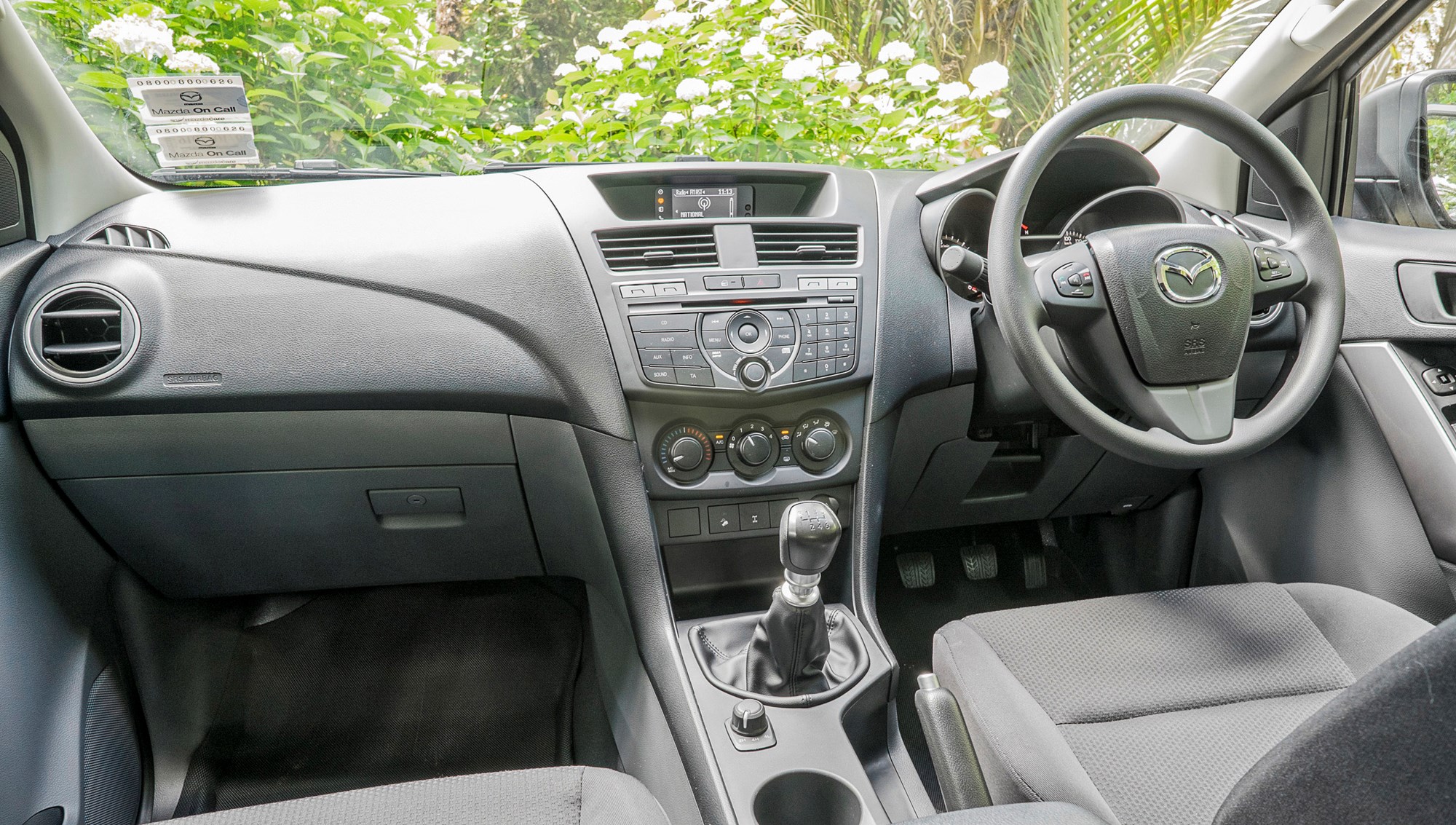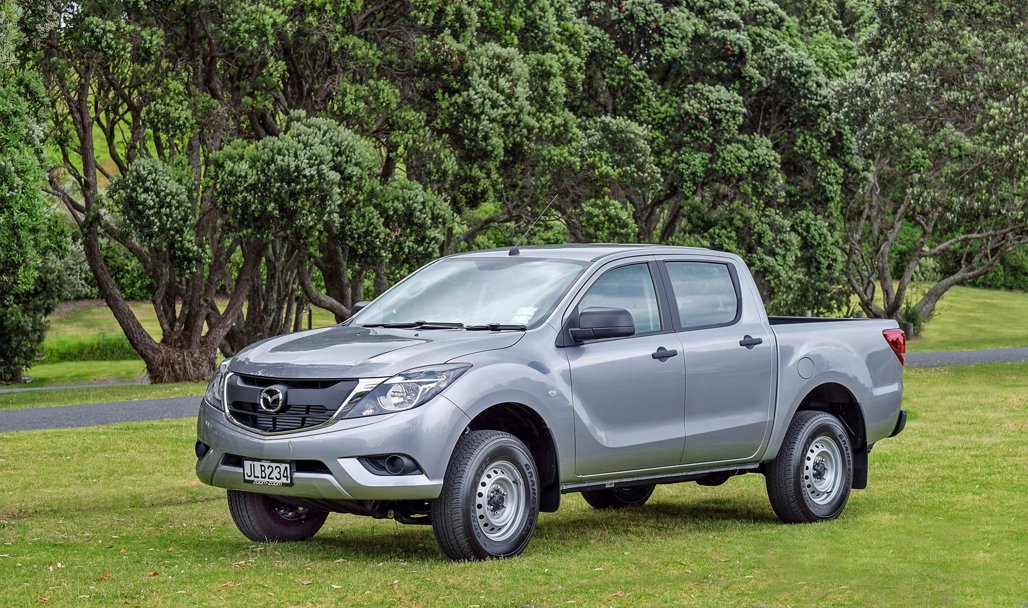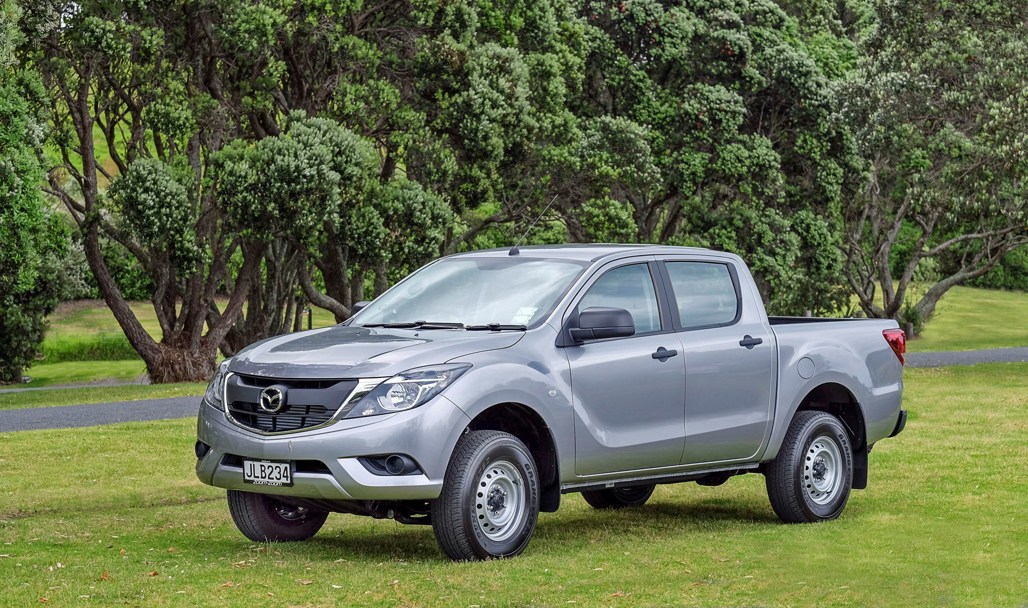Poise and presence in the Mazda BT-50 GLX
Tricky situation alert: we’re visiting a trendy, just-built Auckland suburb in a ute that’s as shiny and fresh as the rows of houses lining the instantly leafy streets, but it’s on steel wheels, and only 16-inch wheels at that.
Is it worth risking being jeered at or stoned by the locals who — although they apparently love utes if vehicle sales statistics are to be believed — love ones with alloy wheels and all the things that make them more car-like than cars. We cautiously nose into the street; no raw eggs splatter against the wheels that don’t have plastic alloy-looking covers, for gosh sakes. It looks like we might just get away with this.
And we do. Despite being in the lowest-spec 4WD double-cab Mazda BT-50 money can buy, this ute has the poise and presence to present as well outside the rows of one-point-something million dollar houses as it does coated with mud or dust on a building site or farm.
The major difference is that the ute isn’t appreciating by a claimed $500 a day, like the houses.

There’s plenty of luxury in this “low-spec” model. Pictures / Phil Hanson
Mazda, as Driven reported in October, has taken a step back from emphasising urban bling and revised its facelifted BT-50 range to more closely target core ute users, such as the rural sector and trades.
But the “low-spec” GLX still has plenty of appeal, even for the suburban set. If the young upwardly mobile families can’t bear the thought of being seen with steel rims, the rims can always be swapped for a set of alloys.
Such has been the progress with utes that, only a few years ago, the specification level on the GLX would have been considered downright luxurious.
It has remote locking, power windows and mirrors, aircon, cruise control, even a lockable illuminated glovebox. The six-speaker audio includes single-disc CD, is MP3 compatible, has Bluetooth phone and audio capability and controls on the steering wheel.
And then there’s what looks like a tin of alphabet soup spilled on a sheet of paper. Search out the letter combos and you’ll find acronyms for anti-lock braking, dynamic stability control, emergency stop signal, hill descent control, hill launch assist, locking rear differential, roll stability control, traction control system and trailer sway control.
A GLX double-cab 4WD with manual transmission costs $51,695, an amount one of the houses will yield after just over 100 days of profit-making. However, the 2WD version costs $10,000 less (a mere 83 days) and that’s tempting because the rear-wheeler has the same clearances and a locking rear differential that will really help it cope on low-friction surfaces.
The clothes may differ, but the heart of the various BT-50s is very much the same, a smooth and powerful 3.2-litre five-cylinder turbodiesel producing 147kW of power and 470Nm of torque between 1750 and 2500rpm. It wasn’t long ago that those power and torque figures belonged to performance cars, not utilities.
In the BT-50 and its particular gearing, the engine’s hardly set up for hot-rodding but acceleration off the line is quite satisfactory and, in the right gear, highway overtaking is brisk. Under heavy use, the engine becomes a bit noisy, although not in an unpleasant way; and it’s almost luxury-car refined cruising on a motorway or open road.
Overall fuel economy of the GLX manual Driven took to both the bush and the ’burbs was rated at 8.4l/100km, but turned out to be closer to 10 litres in real-world use.
Transmission of choice among ute buyers has swung noticeably to the automatic. A modern automatic is preferable both on and off the road and the days of the manual ute may be numbered, as it is on all but a few specialised cars.
However, for those still wanting a manual, the upgraded unit fitted to Driven’s GLX is a good one. The six-speed offers crisp, precise and almost sporty shifting, ratios matched to the diesel’s bountiful torque characteristics.
An upshift indicator in the tachometer helps the driver achieve better fuel economy by avoiding unnecessarily high engine speeds.
It’s testament to the engineers’ skill that today’s utes, still built on an old-fashioned separate chassis mostly using an old-fashioned leaf-spring rear suspension, ride and handle as well as they do.
BT-50 is typical of the breed, with precise steering, restrained body roll and a good level of comfort on all surfaces. Perhaps it’s an indication of Mazda’s decision to embrace the requirements of the load-em-up basic ute markets that the GLX’s ride quality can be a little harsher, though not to the point of being uncomfortable, than some rivals when the tray is unloaded. However, the payback is that it can tote a 1138kg payload without feeling the least bit under-suspended.
Off the road, the GLX is impressive, thanks in part to the standard rear locking differential that, when activated, “forces” drive to go to both wheels rather than just the one that’s not getting any traction. In less extreme conditions, the electronic traction control does well.
Although electronic hill descent control is standard it’s almost redundant on manual gearbox versions that offer overall low gearing of more than 52:1, which means the BT-50 can crawl down steep slopes in first gear low-ratio with little or no intervention from the brakes, and can inch across difficult terrain.
As with its range-mates, the GLX cabin is nicely styled, functional and comfortable; there’s nothing base-model about it.
But here’s a thought: is the GLX specification just for penny-pinchers? The top GSX costs only $3600 more and adds 17-inch alloys, satnav, sidesteps, climate-control air, reversing camera and lots of trim and appearance items. It seems a good-value step up that costs only $100 a month more over three years.
PROS & CONS
MAZDA BT-50 GLX
Price:
$51,695
ENGINE:
3.2-litre five-cylinder turbo intercooled diesel, 147kW/470Nm
PROS: A good all-round “working” truck
CONS: Ride can be a bit harsh when unloaded

